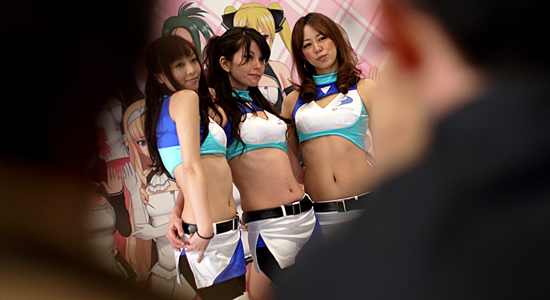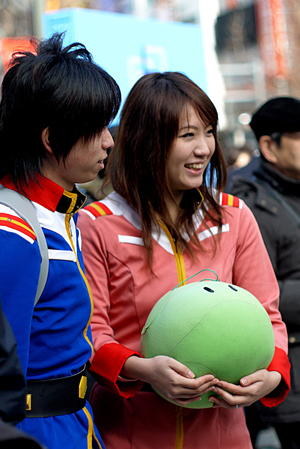
Sunday, January 23rd, 12:35 p.m. The sidewalk just outside Akihabara’s Electric Town exit swells with people. Thousands of cameramen, both professional and amateur, snap shot after shot. Reporters interview a group of Gundam cosplayers. Three news helicopters circle overhead.
The sidewalk, which feels as crowded as a Tokyo train during rush hour, is about to crack wide open, as Akihabara opens its famous pedestrian zone for the first time in over two years.
It was June of 2008 when Tomohiro Kato drove a truck into the pedestrian zone, killing three, then fatally stabbing four and injuring 10. The tragedy temporarily ended Akihabara’s tradition of closing Chuo-dori to car traffic on Sundays, which began in 1973. Sunday’s reopening involved several changes, including beefed up police presence, shorter hours and a restriction on “extreme activities.” The reopening is officially on a trial basis until June.

In the hours beforehand, the mood is an odd combination of anticipation and somberness. In one corner, a game publisher called D3 promotes its new dating game with booth babes and a cheery J-pop tune on endless repeat. Within shouting distance, Akihabara VIPs, including the mayor of Chiyoda, where Akihabara lies, give speeches commemorating the victims of 2008’s attack.
As the clock strikes one, a huge cheer erupts as people begin flooding into the street and form a giant wave of otaku dense enough to put any anime convention to shame.
Those who came expecting any great excitement, however, are quickly disappointed. Those toting cameras outnumber cosplayers, for example, by literally hundreds to one. Of the few there are,  I see two reprimanded by police for relatively mild rowdiness. It seems, at least for this first Sunday, the ban on extreme activities will be strictly enforced. A friend of mine who I bump into on the street asks, “is this it?”
I see two reprimanded by police for relatively mild rowdiness. It seems, at least for this first Sunday, the ban on extreme activities will be strictly enforced. A friend of mine who I bump into on the street asks, “is this it?”
The memory of June 2008 lingers in the air. Many stop to pray at a memorial set up at the site of the incident. We see police hurry down the street and can’t help wondering if something has happened.
On the other hand, never having experienced the original pedestrian zone, I can’t help but think this is pretty much how it always goes. Otaku do their thing, rooting through the shops for that next precious thing to add to their collections. Owners are visibly excited to have the extra foot traffic. The few cosplayers there are get plenty of attention. And in the end, the whole thing goes off without a hitch.
At 5 p.m., the pedestrian zone closes for the day and I join the flood of people going home. Feeling like a sardine on the train, I’m already thinking back fondly on the afternoon when I walked free on the wide open street.

